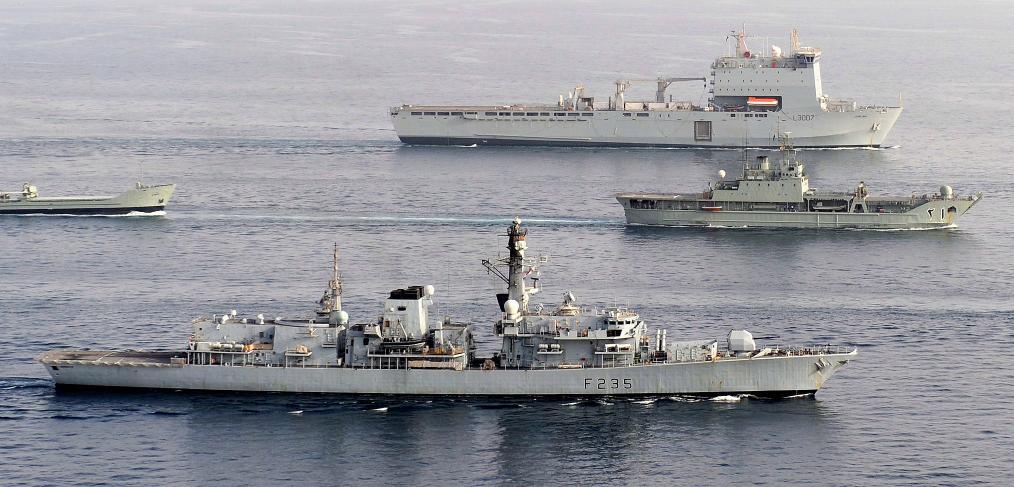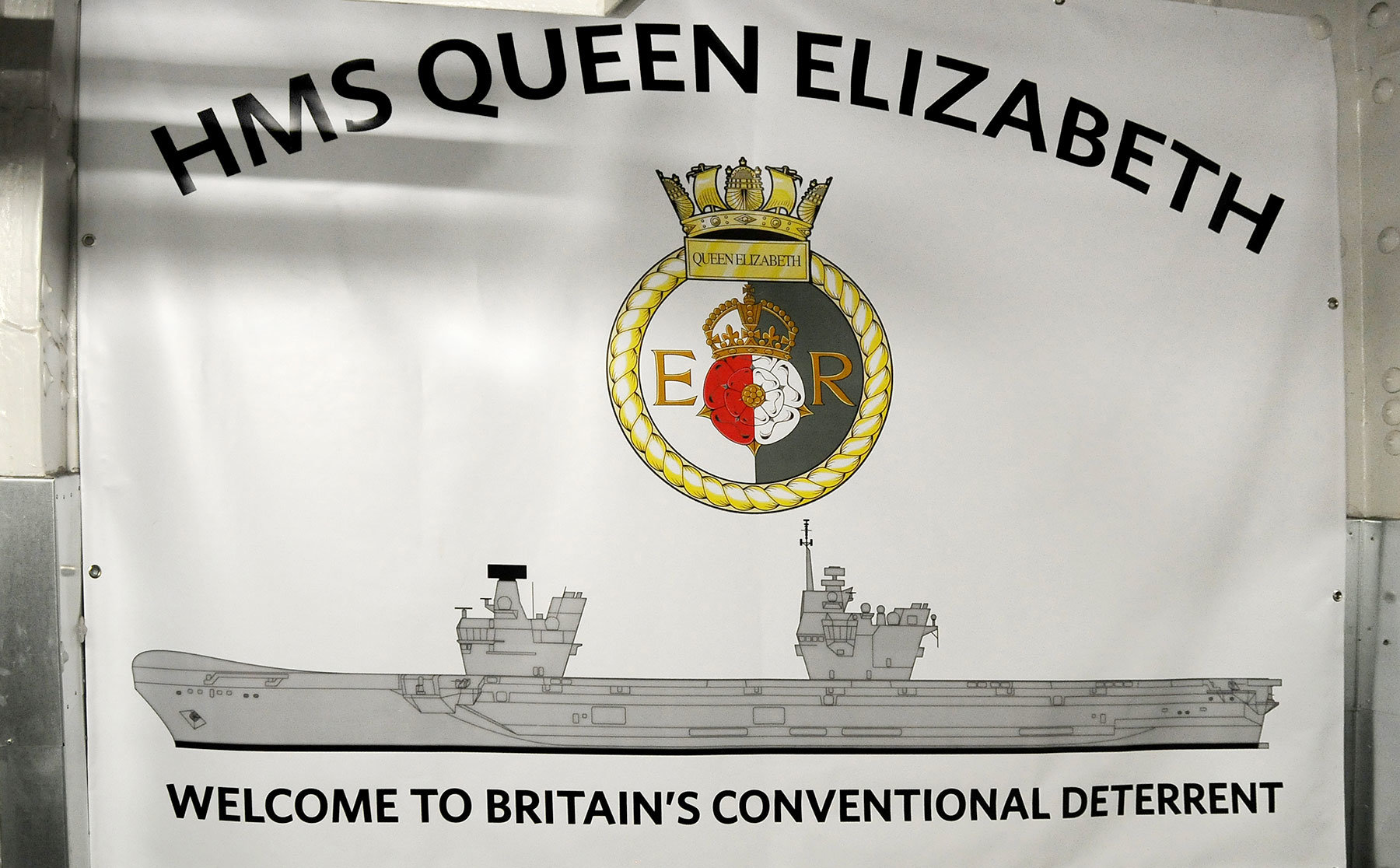
If there is one ubiquitous military strategy, it’s deterrence. Deterrence is usually spoken of in the context of nuclear weapons. It stirs up old Cold War images of the Cuban Missile Crisis and mutually assured destruction. Deterrence theory, however, is a well-established phenomenon within international relations theory that applies to all military action, not only nuclear weapons. For example, was the current situation in the Arabian Gulf caused by a failure to deter?
The ‘fleet-in-being’ is the cornerstone of naval deterrence. Many are aware of the concept but misuse or misunderstand its meaning and the catch-all phrase ‘maintaining the British deterrent’ is used freely. This short-sightedness needs to be addressed for any strategy based on deterrence to work. So, what is this theory, and how does it apply to the Royal Navy?
Deterrence theory first came to prominence in the mid to late 20th century, thanks to academics like Kenneth Waltz and John Mearsheimer. The development of Deterrence theory was driven in part by the concern with nuclear weapons and was the focus of almost all the studies on deterrence. Conventional deterrence works on the same rationale but in some ways is is more complex, reliant on the assessment of relative strengths of non-nuclear capabilities. Both sides rest on three main ideas for them to work; rationality, anarchy and self-help. Rationality simply means, for the most part, countries act rationally. An informed country looks at the pros and cons of a situation and chooses whichever one they think brings the most benefit to them. Anarchy has less to do with the lawless hooliganism we typically think of and instead means there is no ‘global-policeman’ to punish a country like there is for citizens within a country. Finally, self-helps means that if a country wants something done, they usually must do it themselves instead of relying on the generosity of other nations.With these three ideas in mind, the goal of deterrence becomes understandable. As Mearsheimer puts it “conventional deterrence is about persuading an adversary not to initiate a war because the expected costs and risks outweigh the anticipated benefits”. When a nation has a robust, capable military, the cost to attack them is significantly higher than if they were less armed. The cost to attack can be seen not just in money but also; time, equipment, political power and most importantly lives. Since a failed war or attack involves significant cost, a nation could very well end up worse than if it had not acted at all.
Deterrence theory is quite simple to understand, but not knowing it in-depth can often lead to many misconceptions. Where then, do some of the misconceptions of deterrence theory lie? Are these misconceptions a failure of deterrence theory itself or just in the way we use it? Often, misconceptions come from three ideas that are neglected; 1) actors’ goals and intentions must be known, 2) actors’ capabilities must be known, and 3) ‘the unthinkable’ is always possible. Analysing these will help not only in understanding deterrence but how to craft both a realistic and reliable deterrence strategy for the Royal Navy.
Understand intentions
What is meant by knowing an actors’ goals & intentions? Deterrence, perhaps as any other good relationship, works best with open dialogue and information. When a nation has no clear goals or does not present these goals openly to the international community, wielding a deterrence strategy becomes difficult. In recent speeches, the First Sea Lord, Admiral Tony Radakin discusses the need to react to ‘grey-zone activities’ by actors such as China and Iran. These ‘grey-zone’ actions are ones that are not enough to provoke war, but certainly akin to harassment on the international stage. China’s island-building in the South-China-Sea is not taking any lives or damaging ships but is both illegal and problematic for many nations’ sovereignty and shipping. UK naval deterrence is not stopping China precisely because of its lack of clarity with goals & intentions. While it is true that nations have said freedom of the seas must be protected, no one is particularly open about what, if any physical action will be taken. Will Chinese warships be attacked if sailing into the Spratly Islands? Short of any physical attack by the Chinese, we are unlikely to see much real confrontation because of the ‘grey’ nature of this issue. How should the Royal Navy respond to these activities without escalating or over-reacting? Simply put, one reason deterrence may not be working in the South-China-Sea is because no one knows where to draw the line without escalation.In international relations theory, there is a name for the problem of unclear intentions and misuse of deterrence known as the ‘Security-Dilemma’. The problem of the ‘Security-Dilemma’ is when a country increases the size of its military to make itself more secure, however, its neighbours become worried. Is this build-up in preparation for an invasion? Will they use this to undermine us in the future? The uncertainty of intentions causes more military build-up by all parties involved, triggering an arms race. No country can guess the other’s intentions and fearing the worse, create higher tensions and make the likelihood of war more possible. Here, deterrence failed to create national security at all due to goals and intentions not being clear. Had nations been able to explain why they were expanding or when one nation felt the other should stop the build-up, the uncertainty of the situation would be eased.
Understand capability
The second misconception is concerned with capabilities being known to all parties involved. For deterrence to work effectively, much like the idea before, a level of openness must be reached. A navy may not be deterred if they do not know what they are dealing with. They cannot do the ‘risk-benefit’ analysis discussed earlier and may come to disastrous decisions. For instance, when the Soviet Union invaded Afghanistan in 1979, the resistance they would receive was not fully known. They misjudged either how long fighting would take or how many local and regional militia fighters would rush to fight them. Had the Soviet Union known the true cost in time, lives, reputation and resources, they may not have entered at all. Due to the fact they could not accurately judge the opposing sides manpower, determination and resources, they understandably misjudged the situation and entered a war they did not win.
A template of openness to avoid this type of catastrophe is the ongoing ‘Open-Skies Treaty’. Under this treaty, the UK both sends and receives controlled flights of reconnaissance aircraft over its territory with Russia to shed some light on their respective military capability. This treaty is shared with 38 other nations as well. Here, nations can accurately gauge the other’s military capacity and conclude that a fight with the other may be too costly. These examples are all, of course, over-simplifications, however, it serves to highlight the point that deterrence is more than a stern look and more military funding. A well-crafted deterrence policy involves much more work in the realm of diplomatic relations, intelligence and communication.

A handy reminder prominently displayed onboard HMS Queen Elizabeth.
Think the unthinkable
The final misconception, ‘the Unthinkable’ takes us back to one of the tenants of deterrence theory, that of rationality. If the first two ideas are not taken into consideration, not knowing an opponent can make perfectly reasonable actions seem irrational. If a country feels boxed into a corner or is left with no other alternative, then war may be possible. Take for example Japan in 1941. Their attack on not only a much larger US Navy but a larger industrial nation with the speed to repair and replace ships much faster than Japan, seems irrational. Their attack on Pearl Harbour which ‘awoke the sleeping giant’ seemed out of nowhere to many. However, this is only because the US’s notion of rational behaviour did not align with Japan’s. The Japanese military was expanding deep into their long-time rival China’s territory and consuming most of the oil in Japanese reserves. By their calculations, the Imperial Japanese Army and Navy had but a few years to a few months of fuel left before they would grind to a halt. If they crippled the US Pacific fleet long enough, they could attack the oil fields in Indonesia. The US navy, not knowing the full extent of Japan’s intentions and fuel supplies, believed a Japanese attack would not occur as soon as it did. When thinking about rationality in naval deterrence the Royal Navy must carefully analyse what the opponent is willing to lose. What seems suicidal to one country may be a logical last hope to a country with little left to lose or, values potential success more than the loss of a few lives.The concept of ‘the Unthinkable’, or winning a game of deterrence, comes from Herman Kahn, a strategic thinker from the late 20th century. Deterrence requires a mutual fear of both countries avoiding escalation because of the catastrophic outcome of war. However, if one country could always be assured it would have the upper hand every time a conflict escalates, they could entice an opponent to escalate. Despite potential losses, they will always hold a ‘relative-victory’ meaning they lose less than their opponent. This allows them to come out on top compared to their opponent.
Furthermore, too heavy a reliance on deterrence theory and rationality may underplay the role of emotions, confusion and culture. This furthermore makes ‘the Unthinkable’ possible. We often forget that people are behind the control of a nation’s military, and with that comes the panic and anger that may come moments or days after an attack. Iraq infamously attacked Kuwait in 1990 after a diplomatic miscommunication led them to believe the US would remain neutral in the conflict. This confusion was both human error as well as a defeat for the Iraqis. Had there been no confusion, the Iraqis may have taken a different course of action.
So how does this apply to the Royal Navy? Spending more on ships, boosting the number of sailors or manoeuvring ships into troubled waters does not necessarily mean a more effective deterrence. Deterrence requires calm, informed decisions based on an open diplomatic dialogue. If ‘grey-area’ conflicts, or any conflict for that matter, are to be avoided, we must thoroughly investigate what deterring the situation means. Royal Navy officers must also be trained to understand that how we deter Russia, for example, will not be the same way we deter Iran. They have different goals, strengths and cultures. Deterrence must be a flexible guiding principle to craft goals, not a goal in-and-of-itself. Deterrence can and has failed in the past. For the Royal Navy to effectively wield deterrence, addressing the limits and misconceptions of deterrence should be a priority for sailors, analysts and policymakers alike.

Comments on Deterrence theory and the Royal Navy